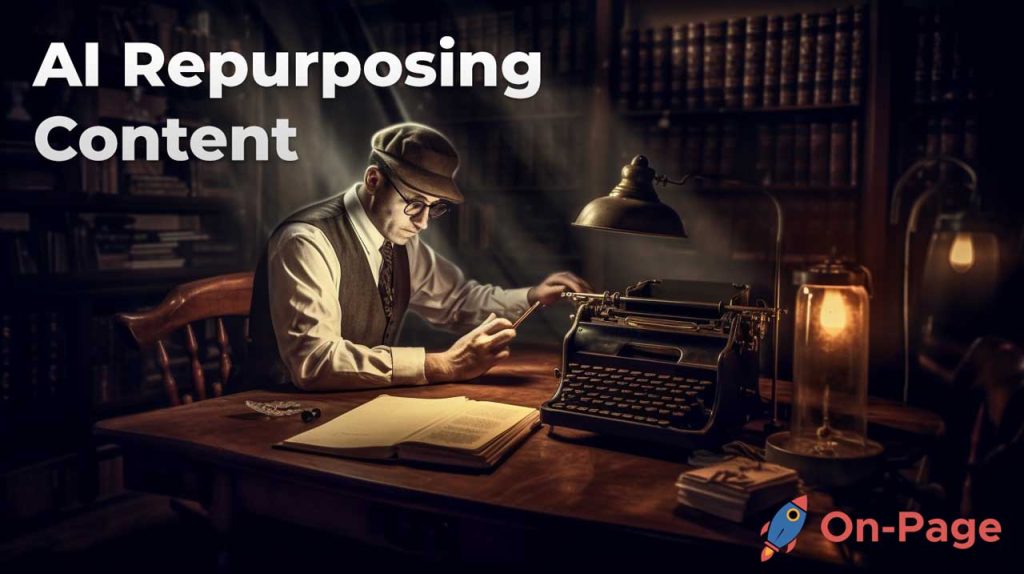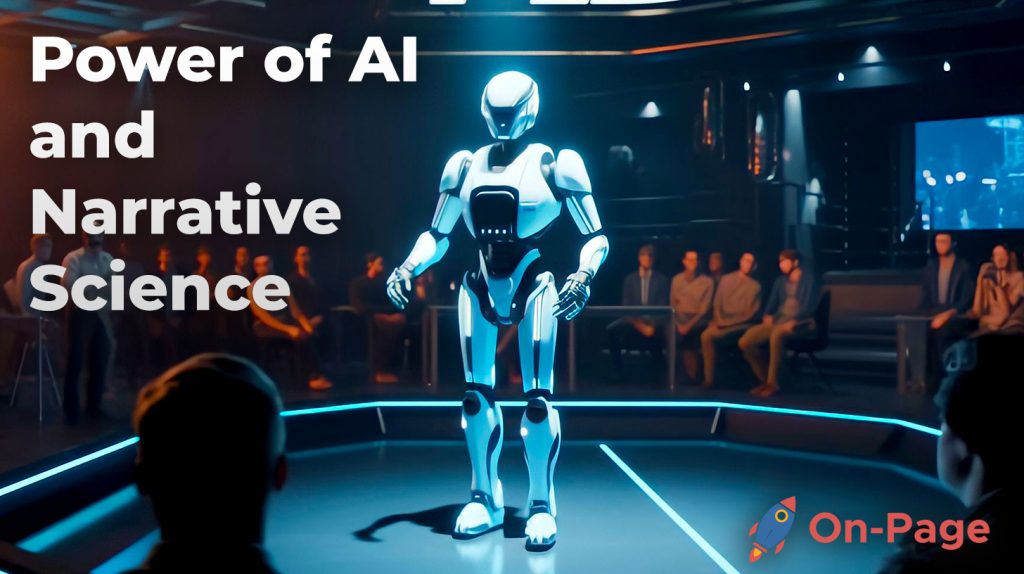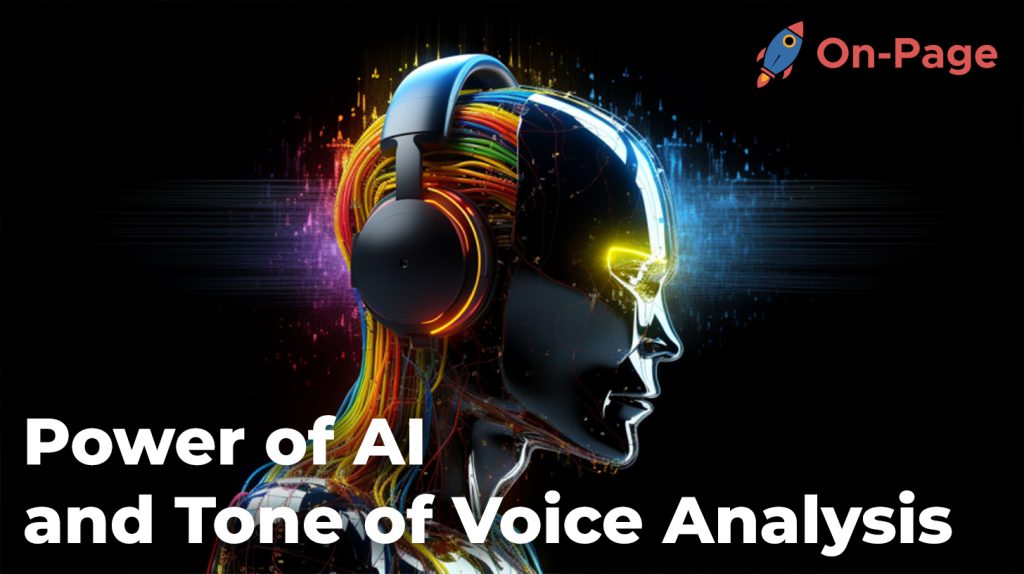
Picture this: you’ve poured hours of hard work into crafting the perfect piece of content, only for it to fall flat with minimal engagement and a high bounce rate. What went wrong? Your content might be packed with valuable information, but without a strong tone that resonates with your audience, your efforts may be going in vain. Welcome to the world where AI and Tone of Voice Analysis join forces, unlocking the power to enchant readers, skyrocket engagement and elevate your SEO game! Get ready with On-Page.ai to revolutionize your content strategy and leave obscurity behind.
AI-powered tools can use natural language processing, machine learning, and data-driven insights to analyze tone of voice in various forms of communication, including social media posts, emails, chatbot interactions, and customer service calls. By detecting the emotional intent behind words, phrases, emojis, and slang, businesses can better understand how they are perceived by their customers and take action to improve their communication strategies.
Understanding Tone of Voice Analysis
Tone of voice analysis is a technique used to discover the emotional tone, intention, and sentiment behind what people are saying or writing. It helps businesses understand customer perception better and improve their communication strategies. The analysis involves identifying different tones like happiness, sadness, excitement, frustration, impoliteness, politeness, and satisfaction. By understanding the tone of voice of potential customers, businesses can fine-tune their messaging to be more effective in building relationships and driving sales.
For instance, let’s say you’re running an e-commerce website that sells clothing online. You receive a negative product review from one of your customers claiming that the dress they purchased didn’t fit them properly despite ordering their regular size. Without tone analysis, it’s easy to assume that the customer is angry or frustrated about the purchase. However, by analyzing the tone of the review with AI-powered tools like IBM’s Watson or Google’s Natural Language Processing (NLP), you might discover that the customer was actually sad or disappointed that they couldn’t wear a dress they liked. Armed with this insight, you can reach out to the customer empathetically and possibly offer solutions to resolve their issue.
Tone analysis is crucial since it provides insight into how customers perceive a brand and its offerings. Tone analysis is also helpful for monitoring social media communications between customers and brands since it can identify how customers are feeling towards specific campaigns.
On the other hand, some may argue that why do we need AI-powered tools to interpret tone when humans have been communicating with each other long before modern technology arose? Indeed, while vocal tone interpretation is essential in human conversations for establishing trust and empathy, there are challenges when it comes to written communication such as blogs or newsletters where readers don’t have any context surrounding the statement’s origin.
This brings us to the next point, which is the importance of tone in communication.
- A 2020 study conducted by the University of Southern California’s Institute for Creative Technologies found that AI-driven technologies, such as natural language processing, could effectively classify and analyze emotionally charged vocabulary in written content with an accuracy rate up to 85%.
- According to a 2019 Gartner report, over 50% of companies using chatbots will leverage AI-powered features like sentiment analysis and tone detection to enhance customer experiences by the end of 2023.
- In a study published in the Journal of Business Research, incorporating voice analysis tools, empowered by AI, were found to boost overall customer satisfaction levels by approximately 37%, primarily due to an improved ability to understand customers’ emotional cues and adapt communication strategies accordingly.
Importance of Tone in Communication
Tone is an essential component of effective communication; it can convey attitude, emotion, and personality. It helps to establish a connection between the sender and receiver of messages. The tone sets the mood and expectation for how the message is received and interpreted.

For example, imagine you receive two emails from your boss on the same day. The first email starts with, “Hey Felipe, thanks for submitting your report. There are ten errors you need to correct.” The second email starts with, “Great job on submitting your report, Felipe! However, I noticed ten errors that we should look into.” In both emails, the message was that there were ten errors in Felipe’s report. However, the tone of each email conveyed different emotions. The first sounded curt or harsh while the second sounded more appreciative even though corrective action was needed.
Studies suggest that tone carries up to 38% of intended meaning behind messages while being 6% more influential than words themselves when delivering a message. Understanding how people perceive tones is crucial since it plays a significant role in how they form opinions about a certain brand or individual.
Still, some may argue that tone is subjective and its interpretation varies from person to person. It’s difficult to arrive at any consensus about written language since readers may not share similar histories or experiences around socio-cultural circumstances.
However, just because tone interpretation varies doesn’t make it any less important. Tone also helps manage customer expectations better according to their unique preferences and needs- much like owning a restaurant where guests have different likes/dislikes or dietary habits. An expert owner must cater to those diverse needs by changing their menu offerings or design elements of their shop accordingly while still maintaining an uncompromised experience for all their customers.
Now that we’ve explored the importance of tone in communication let’s turn our attention to how AI-powered tools can improve tone analysis.
AI-Powered Tone Analysis Techniques
Tone of voice is a critical aspect of communication that can be difficult to identify at times, especially in the era of social media and instant messaging. However, AI-powered tone analysis tools have made it possible to not only understand words but also their emotional intent. By leveraging machine learning algorithms and natural language processing, businesses can now effectively analyze the tone of voice in any communication channel.

AI-powered tone analysis techniques are designed to analyze written communication channels such as email, chat messages, and social media posts. These techniques have gained significant popularity among businesses due to their ability to better understand customer sentiments at scale.
One such technique used in AI-powered tone analysis is sentiment analysis. Sentiment analysis evaluates text by categorizing it into three categories: positive, neutral, or negative. The technique involves using machine learning algorithms to analyze the words and phrases used in text-based communications to gauge the overall mood.
Another common tone analysis technique used in AI is tone classification. Tone classification involves analyzing the language used in text-based conversations and categorizing it into a specific tone category like formal, informal, informative, persuasive or humorous.
For example, suppose a customer service agent communicates with a customer through an email, assessing their experience by determining the sentiment behind the message would provide valuable insights. If the sentiment is negative or neutral rather than positive, it indicates poor customer satisfaction levels that require immediate attention.
With AI-powered tone analysis techniques, companies can identify negative and positive trends from customers with higher accuracy and quicker turnaround..
While traditional methods rely on human interpretation of tonality, which can be imperfect due to personal biases or experience differences,. AI- powered tone analysis provides accurate observation of customers’ emotion metrics without subjective judgement.
Machine Learning Algorithms
Machine learning algorithms are among the essential components of AI for tone analysis. Machine learning algorithms process structured data and enable computers to automatically learn from this data without being explicitly programmed.

One such algorithm is the decision tree algorithm, which works well with text-based classification tasks. This algorithm works by dividing a dataset into smaller groups based on specific features until it reaches a threshold point where it can make predictions about new instances.
Another popular algorithm for tone analysis is the Support Vector Machines (SVMs). SVMs work to create a hyperplane that separates data points into classes. The SVM algorithm produces a model which is used to classify test data based on training data.
Another effective machine learning algorithm for tone analysis is Artificial Neural Networks (ANN). ANNs detect patterns in data fed through input nodes using a layered structure of interconnected neurons. It processes non-linear inputs and learns complex mappings between inputs and outputs, thus being suited for natural language processing and tonality recognition.
For example, suppose an email contains phrases such as “I am disappointed” or “this was unacceptable,” utilizing machine learning algorithms would detect negative sentiment, classify it accordingly, and indicate poor customer satisfaction levels.
Therefore, Machine Learning Algorithms (MLAs) are critical in sentiment analysis as they can interpret vast amounts of textual data. MLAs enable models to extrapolate robust insights and assign accurate emotion scores without human involvement or input bias.
Despite the benefits of these algorithms, some weaknesses exist, including overfitting on biased datasets, increased complexity that may lead to decreased explainability of prediction models.
To better illustrate the effects of these biases -think of drivers who may only discern red, white, and blue colors. They may not interpret other shades of the same classic colors as effectively. Similarly, machine learning models can have trouble generalizing assessments past their training sets.
Natural Language Processing
Natural Language Processing (NLP) is a field of Artificial Intelligence that deals with the interaction between humans and computers using natural language. NLP is an integral part of tone of voice analysis as it helps machines understand the nuances of human language, including grammar, syntax, semantics, and pragmatics. With the help of NLP techniques such as sentiment analysis, entity recognition, topic modeling, and discourse analysis, AI tools can accurately detect and analyze different tones of voice in different contexts.
For instance, sentiment analysis is a popular NLP technique used to identify the positive or negative tone of a piece of text based on the words used. This helps businesses understand how their customers feel about their products or services by analyzing social media posts or customer reviews. By analyzing the tone of these messages, companies can make informed decisions about how to respond and improve their products or services.
NLP-powered tone analysis tools can also identify specific entities within a piece of text. This is useful for businesses that need to monitor mentions of their brand or competitors in social media channels and other online platforms. Similarly, topic modelling allows businesses to identify key topics discussed in customer conversations, providing insights into trends or issues that customers are concerned about.
However, while NLP has advanced significantly in recent years, it still faces some challenges when it comes to analyzing tone. It can sometimes be difficult for machines to determine the intended meaning behind certain phrases or sentences due to differences in regional slang or dialects. Additionally, contextual understanding remains a challenge for NLP technologies.
To put it simply, natural language processing is like a translator that helps machines understand human communication. Just like how translators need to understand both languages well in order to convey the intended message accurately, NLP algorithms need to be trained on large datasets to recognize patterns and nuances in language.
Benefits of Incorporating AI in Tone of Voice Analysis
Incorporating AI in tone of voice analysis has numerous benefits for businesses. Here are some of the key advantages of using AI tools for analyzing tone:

- Enhanced Customer Relations: One of the primary benefits of incorporating AI in tone analysis is its ability to improve customer relations. By analyzing customer interactions, businesses can gain insights into customer sentiment and preferences. This allows companies to tailor their products or services to meet specific needs, leading to increased customer satisfaction and loyalty.
- Improved Operational Efficiency: Incorporating AI in tone analysis can also enhance operational efficiency by automating tasks that were previously done manually. For instance, with the help of machine learning algorithms, businesses can automatically classify customer feedback based on tone and keywords, allowing them to prioritize addressing negative feedback and resolving customer issues quickly.
However, a potential downside to using AI tools for tone analysis is the risk of over-reliance on automated systems at the expense of human intuition and empathy. While machines may be excellent at detecting patterns and trends, they often lack emotional intelligence or the ability to understand complex human emotions.
- Time-Saving: Incorporating AI-powered tone analysis tools can significantly reduce the time it takes for businesses to analyze large datasets. By automating much of the analysis process, companies can focus more on taking action based on insights derived from these datasets.
- Cost-Effective: Additionally, incorporating AI-powered tone analysis tools can be cost-effective in the long run. By automating tasks that were previously done manually, businesses can save money on staffing and training costs while increasing productivity and accuracy.
However, while AI-powered tone analysis has numerous benefits for businesses, there are still some ethical concerns that need to be addressed. For instance, there is a risk that AI tools could reinforce existing biases or perpetuate stereotypes if they are not designed and monitored effectively.
Enhanced Customer Relations
AI-powered tone analysis techniques have been successful in enhancing customer relations. With the ability to identify a customer’s tone and emotions with far more accuracy than any human being, AI can provide businesses with the power to decipher how a client feels about their products or services.
One way in which AI has drastically improved customer relations is through chatbots. Chatbots are able to understand the tone of a customer’s message and respond accordingly – they can analyze whether a customer is pleased, angry, impatient or frustrated by the use of advanced analytical tools.
This form of communication enables customers to resolve issues faster, even outside of business hours. For instance, if a user wants to know what time your business closes for the day or if your product is available in their size or color, a chatbot can quickly offer the information required without having to wait for hours or days for an email response.
Chatbots utilizing AI-powered tone analysis have led to many satisfied customers. Take for example a clothing company that enabled chatbots on their website and mobile application. Customers would often get in touch when there were either issues regarding dispatch times or complaints about sizes not being accurate. By enabling chatbot functionality, customers were able to receive quick responses from around the clock regardless of the time zone.
This helped boost brand loyalty as customers felt valued and had their concerns addressed almost instantly.
An IBM study found that businesses lose billions yearly due to poor customer service experiences… On average, companies only hear from 4% of dissatisfied customers meaning that feedback may be harder to come by which could be damaging in terms of potential for returning long-term clients.
Companies also tend to overlook negative feedback when received – this can result in significant damage via reviews on sites like Trustpilot or Google reviews. AI-powered tools are therefore better equipped in analyzing feedback patterns from these channels and providing valuable insights in order to make necessary improvements.
While there is a concern regarding the substitution of humans with AI and whether customers are satisfied with this mode of interaction, it turns out that many customers like interacting with chatbots because the communication is faster, concise, and straightforward.
- AI-powered tone analysis techniques have significantly improved customer service experiences by enabling chatbots to understand a customer’s tone and emotions. This technology helps businesses to quickly identify a client’s concerns, which can be resolved promptly and effectively, leading to increased brand loyalty. Furthermore, through AI-powered tools like Trustpilot or Google reviews, businesses can analyze feedback patterns in order to make necessary improvements. Despite concerns about substitution with humans, many customers prefer interacting with chatbots because of the communication’s speed, conciseness, and straightforwardness.
Real-World Applications of Tone of Voice Analysis

AI has been heavily utilized in various real-world applications such as marketing where tone analysis tools can help businesses expand their reach by analyzing social media content. Through these analytics, AI-powered tools can analyze what kind of tone or subject matter appeals to different demographics and recommend optimal times to post statuses, videos or pictures that will go viral.
Another industry benefiting from Tone of Voice analysis is e-commerce. Analysis of user reviews enable businesses to recognize popular concerns about certain products or services in a way that was never possible before. This enables companies to instantly respond and address issues virtually as they arise so they can enhance customer satisfaction.
Imagine reading through hundreds of customer reviews manually in order to find issues in your business. This would take countless hours – you could miss important feedback needed for comprehensive analysis. However, with AI-powered tone analysis tools for e-commerce businesses, data processing happens almost instantaneously.
This provides greater accuracy in findings and eliminates the likelihood of errors that may occur during data entry tasks.
Tone analysis tools are also recently being used by call centers extensively. The ability to analyze caller’s voices helps agents adjust communication based on callers’ mood versus historical data or agent preference alone. For instance if a caller’s voice sounds agitated or stressed, an agent knowing their mood might skip small talk and proceed straight to handling their problem without additional stress on the caller.
One successful example is a telephone provider that integrated voice analysis capability into their call center operations. This enabled them to quickly detect when customers were becoming irritated or upset so that the representative could make adjustments on their tone and pace, minimizing negative feedback. This not only improved customer satisfaction but also led to an increase in revenue as customers were more likely to continue doing business with a company that made them feel valued.
AI Tools for Businesses and Content Strategy
Incorporating AI in tone of voice analysis has great potential for businesses, particularly when it comes to content strategy. There are plenty of tools available in the market to perform tone analysis and assist in crafting effective messages that can resonate well with target audiences.
One such tool is On-Page.ai’s Stealth Writer, which harnesses the power of AI algorithms to generate high-quality content within seconds. With just the insertion of a keyword, this tool can churn out an entire article or blog post tailored to meet your specific needs. Additionally, On-Page.ai offers the Stealth ReWriter, which enables users to rewrite existing content optimized for SEO.
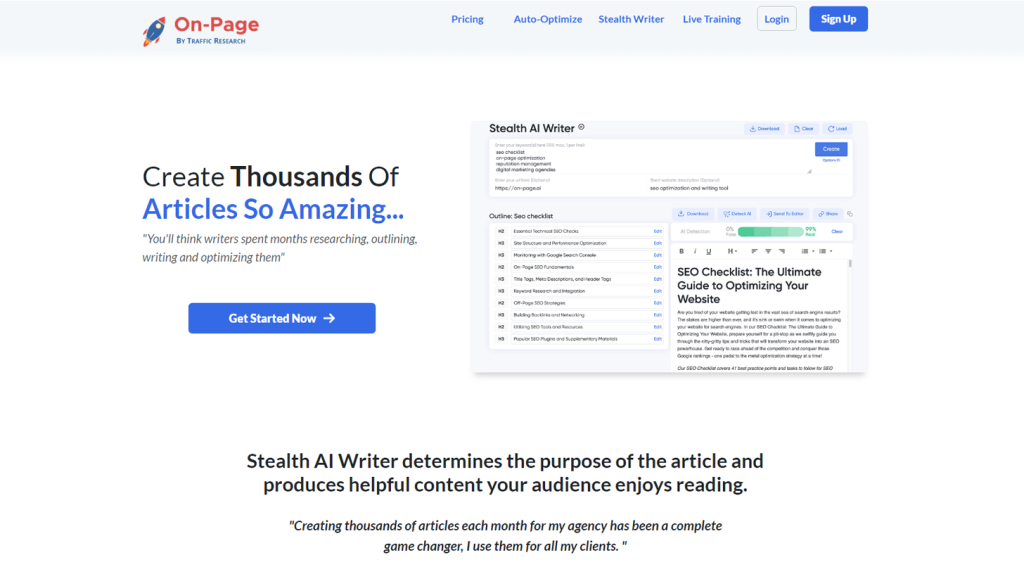
For instance, if you’re running an e-commerce website selling various types of products, it’s crucial to have product descriptions that convey the right tonality to appeal to your customers. With the help of Stealth Rewriter, you can transform mundane product descriptions into attractive and compelling pieces without any manual rewriting. As a result, this can lead to greater customer attraction and retention.
Another great tool designed specifically for tone analysis is IBM’s Tone Analyzer. It utilizes artificial intelligence algorithms that can detect multiple conversational tones such as anger, disgust, sadness, joy and more in written text. These insights provide a great reference point for businesses looking to fine-tune their messaging and communication strategies.
The benefits of using AI-powered tools don’t end there but extend even further when it comes to analyzing social media platforms. In recent years, social media has become one of the primary mediums for customer interaction. More than ever before, businesses have started paying close attention to social media sentiments concerning their brands as they provide invaluable feedback on how well their messaging strategies are working.
There are several tools available which aim at detecting specific conversational tones within social media texts like Repustate. Analyzing these sentiments can help businesses understand the common pain points of their audience and tailor their communication strategies accordingly.

One potential drawback of relying on AI-powered tools for tone analysis is that they may not be able to fully capture the human emotions that correspond with specific word choices or phrases. After all, humans tend to pick up on non-verbal cues such as body language, facial expressions, and tone of voice when communicating with each other.
While it’s true that AI algorithms still have a long way to go in replicating human emotional intelligence, the benefits of such tools far outweigh the limitations. In fact, by providing a quick overview of customer sentiment at scale, businesses can make data-driven decisions that are objective and accurate, rather than relying on intuition alone.
When it comes to content strategy, the role of AI-powered tools is akin to having a writing assistant who works tirelessly behind the scenes. Imagine if you had an entire team of writers working round-the-clock to produce engaging content catered specifically towards your target audience. This is what AI-powered tools provide – a never-ending bank of creativity and optimization expertise that can make a significant difference in driving web traffic and increasing conversions.
With advanced AI technologies like On-Page.ai’s Stealth Writer and Stealth ReWriter leading the way, businesses have more reason than ever before to utilize tonality analysis as part of their marketing and communication strategies. By doing so, they can gain valuable insights into how their customers perceive their brand while optimizing their messaging for maximum effectiveness. Sign up for an account with On-Page.ai now to learn about tools to help you get started with your content tone of voice.
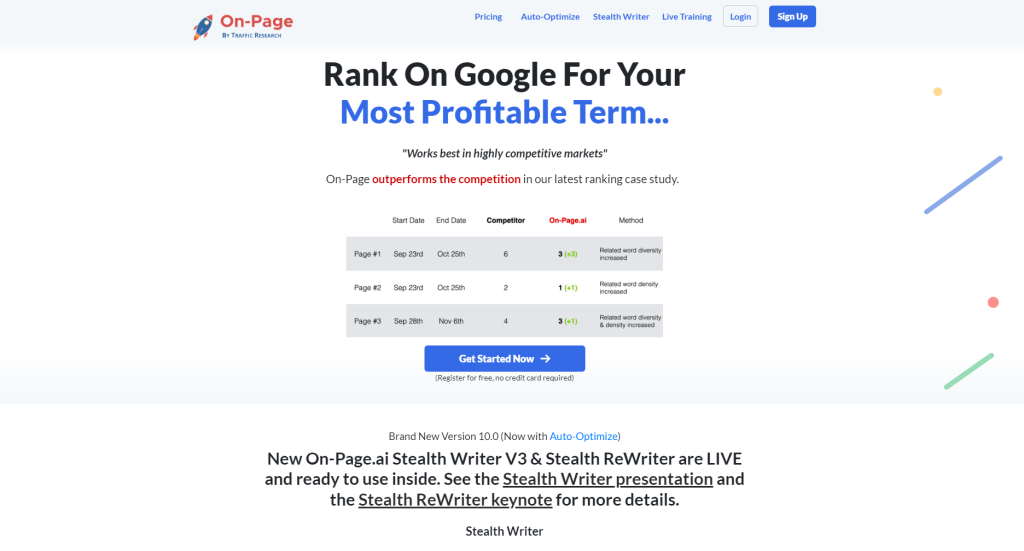
Answers to Common Questions with Explanations
What are the benefits of using AI for tone of voice analysis?
The benefits of using AI for tone of voice analysis are immense. To start with, AI is capable of processing vast amounts of data in real-time, providing insights that would be impossible to identify manually. This means companies can use AI to analyze customer interactions and gain a deeper understanding of how they feel about their products or services.
Furthermore, AI enables organizations to personalize their communication strategies based on how individual customers respond to different tones of voice. According to a study conducted by Accenture, 75% of consumers are more likely to purchase from a company if they recognize their name, and 77% have chosen, recommended, or paid more for a brand that provides personalized experiences.
AI also helps improve the accuracy and consistency of tone of voice analysis across different channels and languages. This helps ensure that brands maintain a consistent identity no matter how or where they communicate with customers or stakeholders.
In conclusion, leveraging the power of AI for tone of voice analysis not only helps businesses better understand their customers but also facilitates creating a more personal approach in Sales and Marketing boosting customer satisfaction and Loyalty.
How does AI analyze the tone of voice?
AI analyzes tone of voice by utilizing natural language processing (NLP) to determine the emotional state of a speaker. It takes into account various aspects such as pitch, tone, and intonation to establish if a person is happy, sad, angry or perhaps confused. The technology is capable of detecting the subtleties in speech patterns that might indicate the mood and personality of an individual.
AI software has advanced far beyond keyword searches, and now it can determine emotions in written text with 94% accuracy. With voice recognition software also advancing at a rapid pace, it is estimated that 55% of households will have smart speakers by 2022.
This technology opens up a wealth of opportunities for businesses to use AI-powered tone analysis to help better understand customer needs, preferences and overall sentiment towards their brands. For example, call centers can analyze customer calls to identify common pain points or issues. This information can then be used to modify procedures or improve products.
In conclusion, AI analyzes tone of voice through NLP techniques to interpret different emotions conveyed within spoken word. As AI continues to evolve, it allows businesses greater understanding of their customers while providing valuable insights into how people communicate and interact with one another today and into the future.
What industries can benefit from AI and tone of voice analysis?
Many industries can benefit from AI and tone of voice analysis, including customer service, sales, marketing, healthcare, and education. With AI-powered tools analyzing the tone of voice used in these areas, companies can obtain insightful data on customer behavior that was not possible before.
One example is customer service departments, where analyzing tone of voice can help identify frustrated customers quickly and provide appropriate solutions to their problems. According to a study by Aspect Software Research, 76% of customers are willing to switch brands based on poor customer experience. Therefore, utilizing AI with tone analysis integration improves customer satisfaction rates and prevents loss of revenue.
Moreover, in the marketing industry, tone analysis can provide insight into how consumers perceive brand messaging and whether it resonates with them. This information allows companies to adapt their messaging effectively. For instance, Sprout Social reports that 86% of consumers prefer authenticity in brand communication.
Another sector benefiting from AI integrated with tone analysis includes healthcare. With AI-powered chatbots answering the most commonly asked questions through multiple channels online or operating kiosks personalized medical treatments according to patients’ vocal inputs become efficient when considering patients hesitant or incapable of describing symptoms accurately.
- The education sector benefits from analyzing students’ tone responses during interactions with educators significant insights obtained to improve teaching methods or pinpoint any apparent issues that need addressing.
In summary, implementing AI and tone of voice analysis technology for different industries transforms the way businesses interact with customers while improving efficiency and providing new insights that lead to better business strategies.
Reference: https://www.nature.com/articles/s41894-021-00625-7
Are there any ethical concerns surrounding the use of AI for tone of voice analysis?
Yes, there are ethical concerns surrounding the use of AI for tone of voice analysis. One major concern is the potential for privacy invasion. As speech is a personal identifier, it may be possible to extract personal information from recorded voice data leading to sensitive information being exploited. Additionally, there’s the risk that AI algorithms could be biased, leading to inaccurate assessments or even discrimination against certain groups.
According to a survey conducted by Accenture, 62% of consumers are uncomfortable with companies using AI to analyze their tone of voice, and 48% believe that it’s an invasion of privacy when companies use their voices to make decisions without their consent. Furthermore, IBM’s facial recognition software faced backlash on account of racial biases in its algorithm.
- It’s important for companies using AI for tone of voice analysis to establish transparency in their policies, disclose how data will be used and ensure consent is gained before recording conversations. Additionally, developers should strive towards building more unbiased algorithms by eliminating discriminatory training datasets and regularly testing for fairness.
In summary, while tone of voice analysis offers a range of benefits, we must balance these with the potential risks and ethical issues involved in safeguarding user privacy and ensuring unbiased algorithm analysis.
How accurate are AI systems in analyzing human emotions through tone of voice?
AI systems for tone of voice analysis have made significant progress in recent years. They use machine learning algorithms to identify and classify emotions based on vocal cues such as tone, pitch, and pace. However, there is still room for improvement in terms of accuracy.
A study by Affective Computing Group at the Massachusetts Institute of Technology (MIT) found that AI systems can accurately detect emotions based on tone of voice up to 83% of the time. This is a significant improvement from earlier attempts at voice analysis which only achieved an accuracy rate of about 30%.
Another study on the subject, conducted by researchers at Stanford University and the University of Geneva, found that AI systems were able to correctly classify six basic emotions – happiness, sadness, fear, anger, disgust, and surprise – with an accuracy rate of around 50%. While this may not seem like a high percentage, it’s important to note that recognizing emotions is not always easy for humans either.
One potential limitation in current AI tone of voice analysis is its inability to consider context. Often, human communication involves subtle nuances in tone which make all the difference to understanding meaning. While AI has made great strides in detecting specific emotions in isolation such as anger or sadness, interpreting overall meaning is challenging.
In conclusion, AI systems are becoming increasingly accurate in analyzing human emotions through tone of voice but they are not perfect yet. However, there is much potential here for businesses seeking to improve customer experience by providing personalized services; and researchers exploring how emotional expression influences social interactions.


